Agentic AI – A Potential Black Swan Moment in System Integration
What happens when integrations are no longer hardcoded step by step—but instead guided by AI that understands goals, rules, and context?
In this article, I share my hands-on experience with Microsoft’s new Agentic Logic Apps—and why I believe we’re entering a new paradigm.
Agentic Logic Apps: A Potential Black Swan Moment in System Integration
What Is a Black Swan Event?
In history, a Black Swan event refers to something unexpected and highly impactful—an innovation that breaks away from conventional norms and forces a complete shift in thinking.
“We already have horses,” they said. “Let’s just focus on improving them.”
When automobiles were first introduced, many resisted. But over time, the car didn’t just replace the horse—it redefined how society moved, built infrastructure, and interacted with the world.
That kind of shift is what I believe is beginning to happen in the integration landscape.


What Does “Agentic” Mean?
To grasp agentic AI, it helps to contrast it with what we’re used to.
Traditional AI tools—like ChatGPT, GitHub Copilot, or other LLM-based apps—generate content, suggest code, and assist with documentation. But they rely on human input to act. They are passive.
We’ve improved workflows by embedding these models into pipelines. But they haven’t fundamentally changed how we build integrations.
That changes now.

Introducing Agentic Logic Apps
Agentic Logic Apps allow you to build workflows with built-in intelligence. Instead of following a strict, predefined script, they include an AI agent that:
-
Understands your goals
-
Decides how to achieve them
-
Uses the tools you define
Think of it like adding a smart assistant to your integration team—someone who reads your business process, knows your rules, and acts independently based on your intent.
Smart orchestration replaces static workflows.
You don’t hardcode everything. You define goals and give the agent the right tools—it figures out the rest.
You’re still in control:
-
You define available tools
-
You decide when humans should step in
-
You control how far the agent can go
As confidence grows, you can gradually hand over more responsibility.
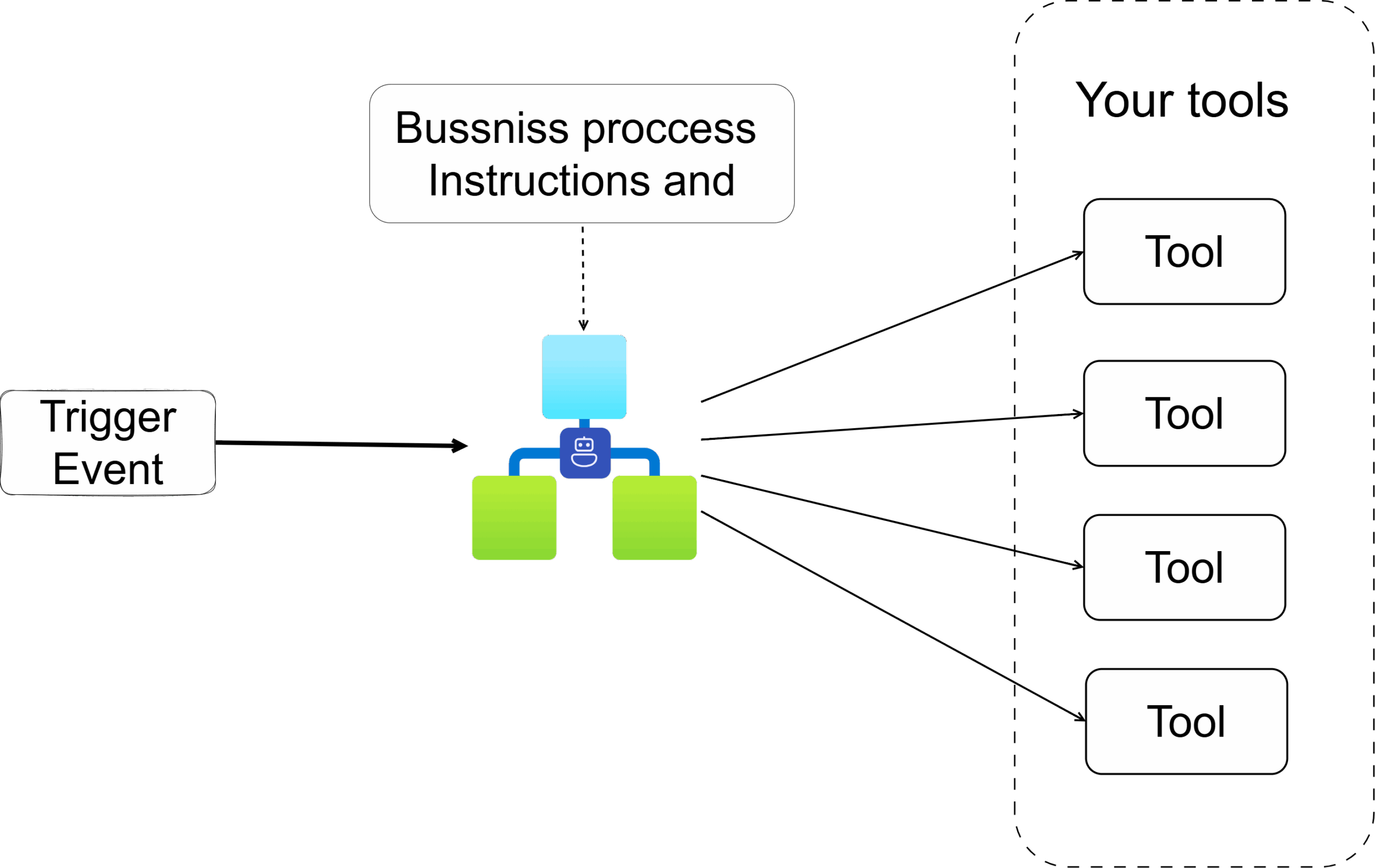
Getting Started: Setting Up an Agentic Workflow
Important: Before diving into setup, let’s clarify one key term: tool. In this context, a tool is any predefined action the agent can use like calling an API, running a function, or triggering another workflow.
Step 1: Set up your Azure AI Foundry project
his is where you define your agent’s capabilities and access to models.
Follow the official instructions here: Create an Azure AI Foundry project in Azure AI Foundry portal – Microsoft Learn
Once the project is ready, open Azure AI Foundry Studio.
Step 2: Create model endpoints
Go to “My Assets” and create model endpoints. This is important, you’ll later connect these models to your Agentic Logic App to enable reasoning and decision-making.
Step 3: Create the Agentic Logic App
1. In Logic Apps Standard, select the new Agent option when creating your workflow.

2. Set up your trigger (as you would in a regular Logic App).
Define your goal using natural language. This is the most critical step. Be clear with your instructions and include any restrictions or steps the agent should follow.
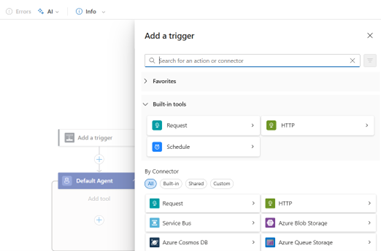
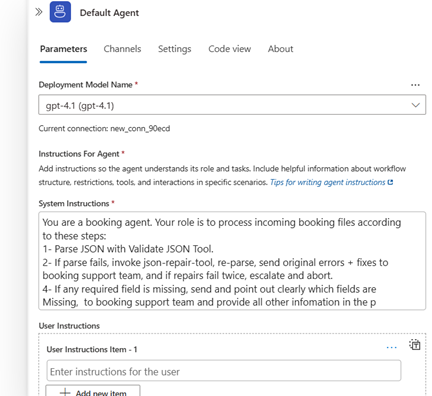
3. Add your tools it can be any reusable logic blocks.
-
- When creating a tool, describe its purpose so the agent can understand when to use it.
- Define the tool’s parameters to indicate what kind of input it expects. This can include dynamic data or plain English instructions the model can interpret both.
When creating a tool its also critical to provide a description of its purpose so the agent can understand.

You should also provide a parameter to this tool, to define what kind of input data you will use.
Here there a magic can also happened as you can just define parameters not only from your data but also as instruction in plain English and the agent will understand and do the rest.
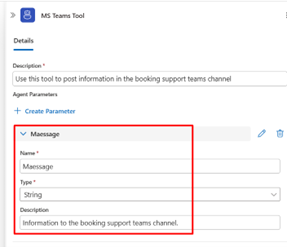

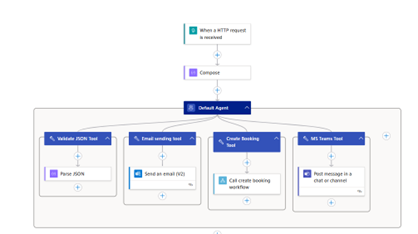
Now you are all set. This is just the beginning but it’s a promising one!
Next Steps for Success: Change your mindset
- Identify human bottlenecks: Look for manual steps in your processes that could benefit from AI assistance.
- Practice prompt engineering: Write clear, concise prompts to guide the AI effectively.
- Get feedback and improve: Test your integrations, gather feedback, and refine your workflows.
This is a legitimate Black Swan event for system integration. Why?
- Engineers will stop writing code: Endless logic code will be replaced. The agents handles translation and orchestration. Developers must shift focus from code to process. Business logic becomes the new core skill.
- Conversation replaces documentation: In near furure Instead of reading through hours of documentation, you’ll simply instruct the AI “Connect to my Azure SQL database and extract the sales data from last quarter.”
- Integration becomes composable: Once your tools and services are exposed, combining them becomes effortless. The whole becomes greater than the sum of its parts.
What This Means For Developers
Your focus must change, focus on business logic: We need to fully focus on what matters (solving business problems) instead of fighting with incompatible APIs
The Future Is Already Here
Agentic integration might sound like the distant future, but they’re happening right now.
Welcome to the black swan event. The water’s fine. jump in!
Want to know more?
Contant me, Ahmed, CTO of Contica and Azure MVP.


Ahmed Bayoumy